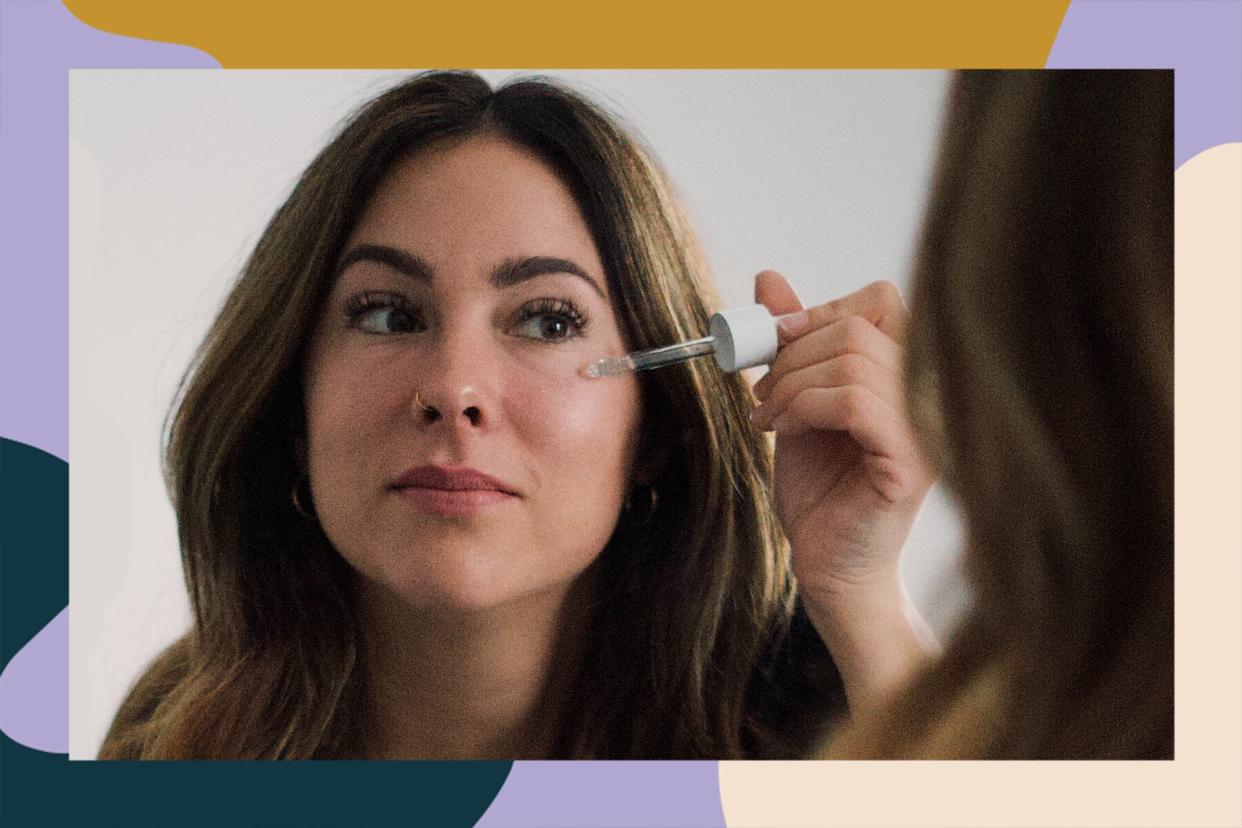Here's What Dermatologists Want You to Know About Active Skincare Ingredients

Unsplash
Whether it's in the form of chuckle-inducing skincare memes or skincare tutorials, we've all heard about the many miracles of vitamin C, retinol, and alpha-hydroxy acids (AHAs) at some point. The praise is well deserved, as these active ingredients work to target skin concerns such as dark spots and acne. However, while actives are an integral part of skincare, using them together at once could cause more harm than good.
But, this doesn't mean you can't mix active ingredients in your skincare routine. It's about being mindful about how many you use, which ones you use, and how you use them. To best understand what active ingredients are and how to use them, we tapped seven experts to get their insight.
What are active skincare ingredients?
Active ingredients are incorporated into skincare products to target skin concerns including dryness, acne, and signs of aging. "There are a vast variety of actives in the skincare space," says Courtney Rashidi, a licensed esthetician. "However, the ones you will probably hear about the most are AHAs, beta-hydroxy acids (BHAs), retinol, hyaluronic acid, benzoyl peroxide, hydroquinone, and vitamins C, E, or F."
hellogiggles - $6.80 Available at Sephora
What should you consider before adding active ingredients into your skincare routine?
New York-based dermatologist Debra Jaliman, M.D., says you first need to consider your skin type, texture, concerns, and goals. Additionally, New York-based dermatologist Hadley King, M.D., suggests evaluating the strength and formulation of a product's active ingredients to get an idea of how well your skin will tolerate it. "The strength will determine how potent the ingredient is—which will affect how potentially irritating it may be," says Dr. King.
Finally, you' should consider your overall skincare needs and lifestyle. "These include downtime, sun sensitivity, and pregnancy," says LeeAnne Leslie, clinical education manager at Alpha-H Skincare.
What's the best way to incorporate active ingredients into your skincare routine?
While it can be tempting to try a ten-step routine, Rashidi recommends slowly introducing new active ingredients to give your skin time to get used to them. "Choose a product that will target your skin concern, and slowly integrate it into your routine," she says.
Dr. King says that some active ingredients are suitable for daily use, such as vitamin C, AHAs, and the actives inside sunscreen. "Sunscreen ingredients are considered actives and should definitely be used daily," she says.
hellogiggles Available at Amazon
Application order and storage also matter. "For an active ingredient to be active, it needs to be able to penetrate the skin. So, products with actives like serums should be applied first, while more occlusive moisturizers and can be layered overtop," says Connecticut-based dermatologist Deanne Mraz Robinson, M.D. "Additionally, storage matters—pay attention to product packaging instructions about exposure to light and heat and be sure to keep an eye on expiration dates."
How many active ingredients should you use at once?
Products that are formulated with multiple active ingredients are usually formulated to be tolerated well by the skin, according to New York-based dermatologist Elyse Love, M.D. However, it's possible to overdo it by combining too many single active products at a time. Doing so can actually be counterintuitive, as board-certified dermatology physician assistant, Savanna Perry, PA-C, explains that using multiple actives at the same time can cancel out their benefits and potentially cause irritation.
To avoid this, Dr. Love suggests limiting the number of actives you use. "A good rule is a maximum of two products with active ingredients at a time, so four products with active ingredients a day," she tells HelloGiggles. "If you want to incorporate more active ingredients into the routine, it's a good idea to buy products which combine the ingredients in one formulation, or to alternate the days when single-use ingredients are used."
How do you heal skin that's been overly-sensitized from using too many active ingredients?
If you have found your skin to be dry, irritated, and sensitive from using too many actives, it's helpful to cut down on the product overload and use gentler products. To do just that, Rashidi recommends using gentle, non-fragranced items that contain soothing ingredients to help your skin bounce back.
Additionally, Leslie also advises sticking with moisturizers that contain humectants to hydrate the skin. "Emollients support the skin barrier and occlusives help to lock in moisture," she explains. "Once the skin has healed, active ingredients can be added back in one at a time, starting with a smaller amount and lower frequency."
hellogiggles Available at Amazon
When in doubt, Perry says it's always wise to schedule a visit with your dermatologist as they can best advise how to help your skin heal. "A great dermatology provider can help simplify your routine to be just as effective for the outcome you're going for, without fewer products or steps," she explains.

